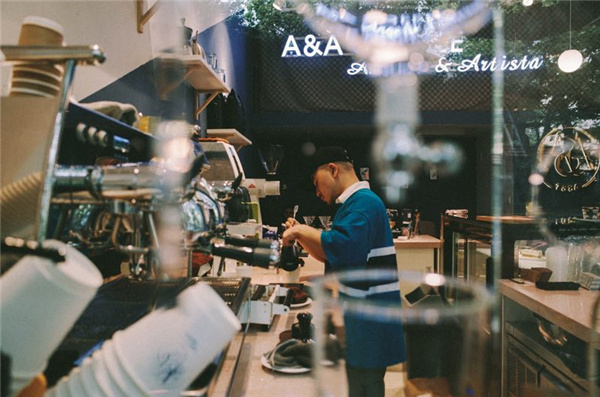 |
|
A barista makes coffee at A&A Coffee in Shanghai. [Photo provided to China Daily] |
Another coffee outlet that has been reaping the benefits of the coffee boom is Par Cafe, which is a part of Family Mart, a Japanese convenience store operator.
According to Wang Yongyi, marketing director of Family Mart on the Chinese mainland, the sales of Par Cafe have doubled every year since 2014. Last year, the cafe sold around 100 million cups on the Chinese mainland, a fivefold increase from 2017.
The number of Family Mart outlets which come with a Par Cafe on the Chinese mainland has also grown from 2,000 in 2018 to 2,700 in 2019. Shanghai is home to 1,500 of these stores.
"We will expand the coffee-experience areas in Family Mart, and our final goal is to launch our coffee brand independently," Wang says.
"We want to do more than just expand our market presence-we also aim to help raise the level of awareness of coffee, allowing more people to understand this culture, what high-quality coffee is and the ingredients that go into making coffee."
Despite the growing competition, Lyu is confident that there is still more room for new players to cater to different segments of the market.
She explains that while coffee chains like Starbucks focus more on providing a comfortable in-store environment, those like Par Cafe are primarily aimed at white-collar workers who simply need a quick caffeine fix. Specialty cafes, on the other hand, meet the demands of the more discerning customer.
The relatively low consumption rate is another factor that industry players can cheer about.
"Compared with foreign coffee markets, the average person in China only drinks three to four cups of coffee every year," says Lyu.
In contrast, the average American drinks some 400 cups per year. Coffee drinkers in Scandinavian nations like Norway and Sweden drink more than 1,000 annually.
"We don't really have much competition in such a potentially large market. We should welcome more cafes of different styles to let more people understand and enjoy the coffee culture," she adds.
Although the epidemic has hit the freshly brewed coffee market-Starbucks, for instance, temporarily closed over half of its outlets in China in late January-the overall coffee market is still growing, especially the instant-and drip-coffee segments, says Wang.
He notes that the increasing pace of life has compelled many consumers who are strapped for time to pick these convenient kinds of coffee instead.
According to the Research Institute of China for Business Industry, instant coffee accounts for 70 percent of the market share while freshly brewed coffee only makes up 15 to 20 percent.
"The entire coffee industry will pay more and more attention to these peripheral products as coffee is gradually becoming a necessity in life. Besides, these products are not only convenient but also allow people to minimize contact with others during an epidemic," Wang says.